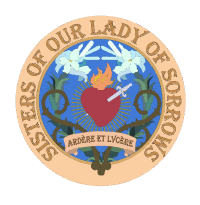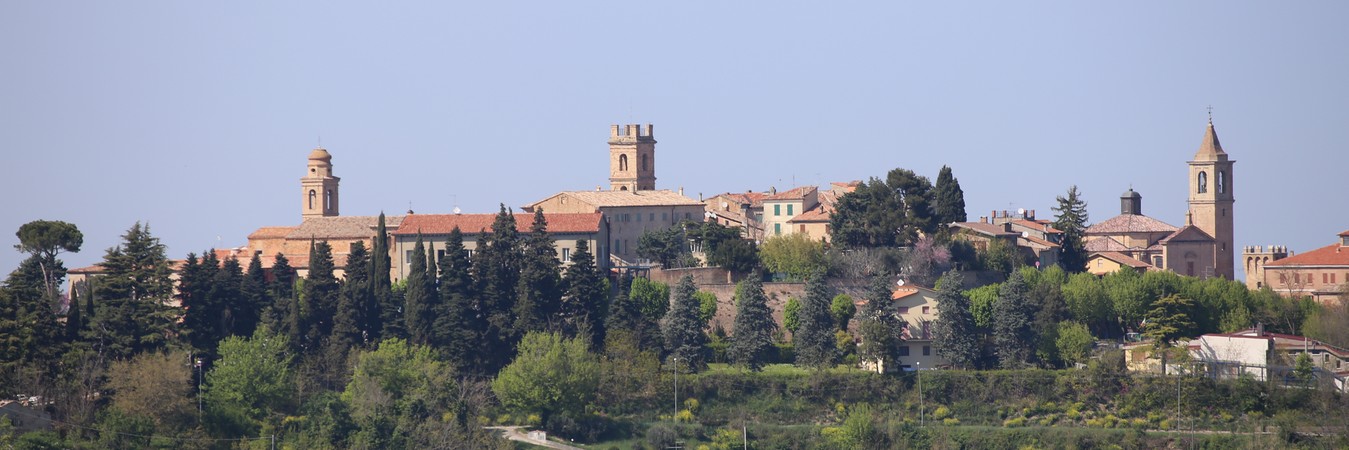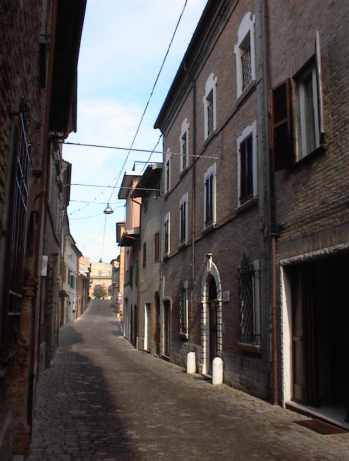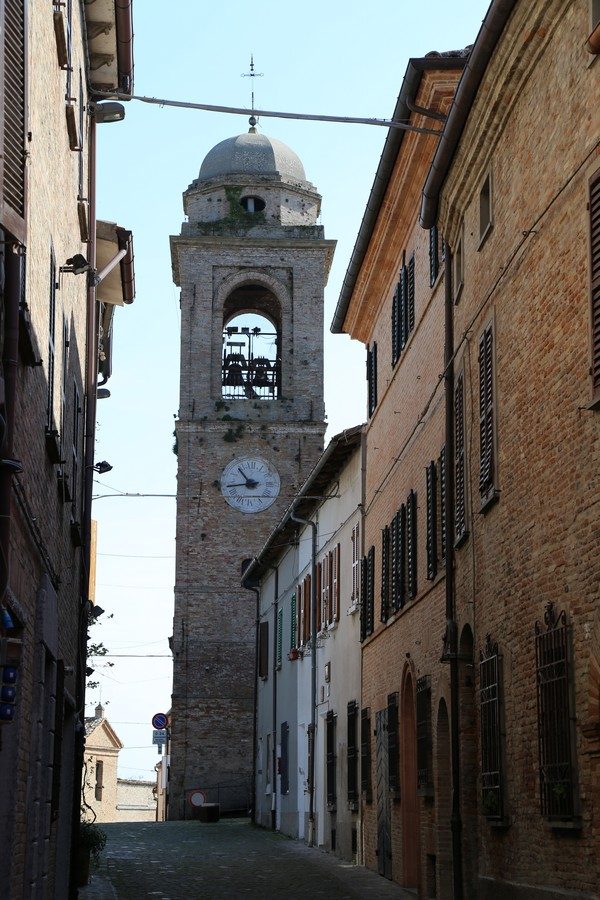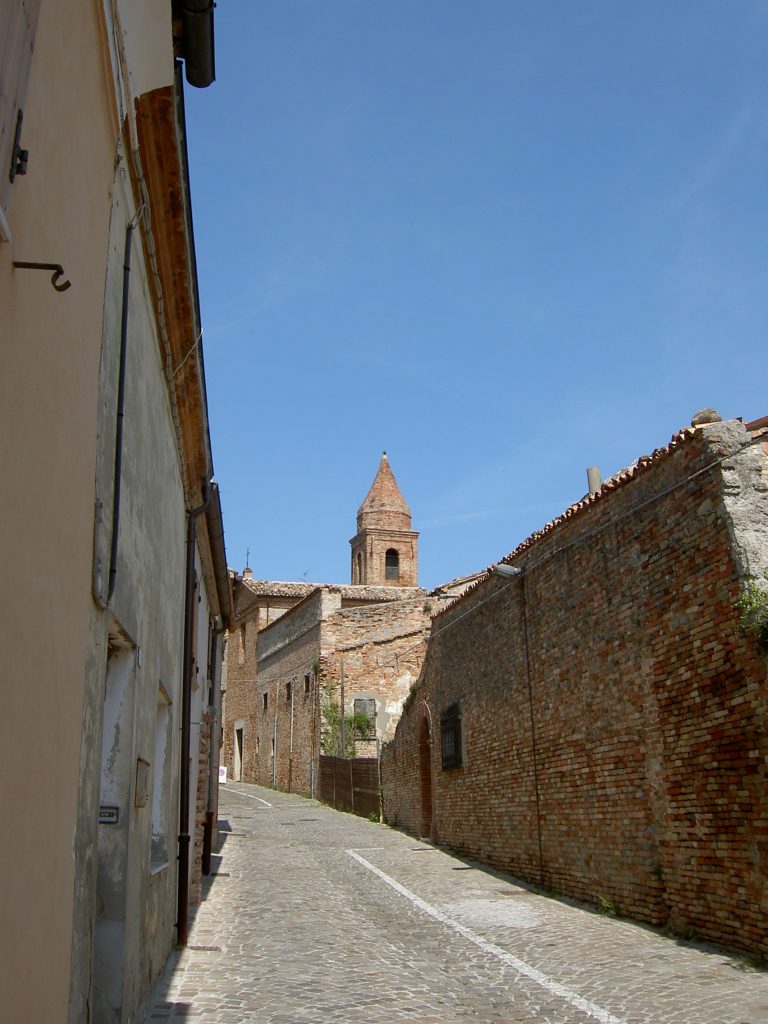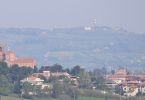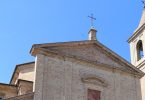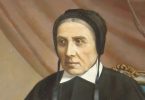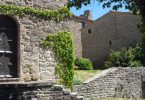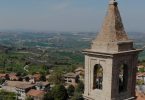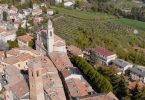from 1791 to 1807 and from 1810 to 1824
In 1791, at the age of 5, Elisabetta moved with her family to the nearby town of Mondaino, where she lived with her mother Vittoria, her father Giambattista, her brother Giancarlo, and her sister Dorotea.
The reasons for this transfer can be found in the division of the paternal assets. It was also more convenient for Giambattista to work as an appraiser in Mondaino where his property and that of the Poor Clare nuns which he administered were located.
Giambattista Renzi’s kinship and friendship with the wonderful pastor, Fr. Pietro Renzi, allowed Elisabetta to grow in a very religious environment and to take advantage of the presence of several prestigious religious institutions.
Elisabetta returned to Mondaino when the Monastery in Pietrarubbia closed in 1810, and she remained there until she moved to Coriano in 1824.
This period was characterized by doubts and sufferings, and by the search for God’s will for her.
For Elisabetta, a fall from a horse became a sign from the Lord for her that she should revisit her desire for consecration. She entrusted herself to the spiritual direction of Fr. Vitale Corbucci, who, considering the spirit by which her heart was governed and seeing her good dispositions, after a long period of discernment, was guided by the spirit and assured her that the Lord destined her for the good education of girls, directing her to the Conservatory of Coriano. Elisabetta did not delay in carrying out the will of God manifested to her through her spiritual director. (cfr. Positio p. 400)
From Coriano, she returned to visit her mother on various occasions.
“My Mother begs me to go and find her before winter comes in, but I do not know if Your Excellency will allow me to do so.” (6/10/1836)
“My Mother has been begging me for some time to go and find her, mainly because I have known that she is not well at present, but without Your Excellency’s permission I will not move from Coriano.” (29/05/1837)
Elisabetta educated in the monastery of Mondaino
When she was about nine years old, Elisabetta entered the monastery of the Poor Clares as a boarder, and shortly after, received her First Communion. Her experience as a boarding student must have left a mark on her spirit, through the teaching and example of the nuns directly involved in the formation of the young girls.
It was here that Elisabetta began to perceive God’s presence in her life, facilitated by a “very sweet nature” and by the strong experience of Christian life her parents had given to her.
Already as a child, she loved to be alone, to spend her time with her beloved Jesus; she loved to grow in virtue, so much so, that it is said she chose a companion with whom to compete to see who loved Jesus the most.
“Elisabetta was thus a child given to reflection, and she understood so well how important time was that she considered her hours lost if they were not used to grow in virtue and in deeper communion with God. Knowing her character, her father, Giambattista Renzi, entrusted her to the sisters of the convent in Mondaino to be prepared to make her First Communion.
We know only this of that experience: Elisabetta was willed with a happiness so great that it was visible in her face, and after she had offered her deepest love and thanksgiving to Jesus, she kissed her parents, who were deeply moved, and respectfully greeted the Abbess, kissing her dress. Then with radiant joy, she told them that from this time her tongue and her soul were worthy of reverence, because they had been sanctified by the touch of Jesus, the soul’s holy spouse”. (Positio p. 499)
This is how Giancarlo described Mother Elisabetta:
“Even as a child, [Elisabetta] opened herself up to silence and prayer; she lived in the comforts of her birth family as a ray of light shining on pure gold; she did not acquire beauty from the wealth around her, but everything precious around her, she herself made beautiful with her great goodness and sweetness”. Elisabetta writes to her brother on August 1, 1839:
“Dear brother, let us not look too much at ourselves. We would like to see and understand … but we do not have enough trust in Him who fills us and surrounds us with His love. Let us use the light of faith to climb higher and higher. At the moment of death, as at the farthest frontier that separates us from the other life, we will see and understand the great reality of these things”. (Positio p.185)
